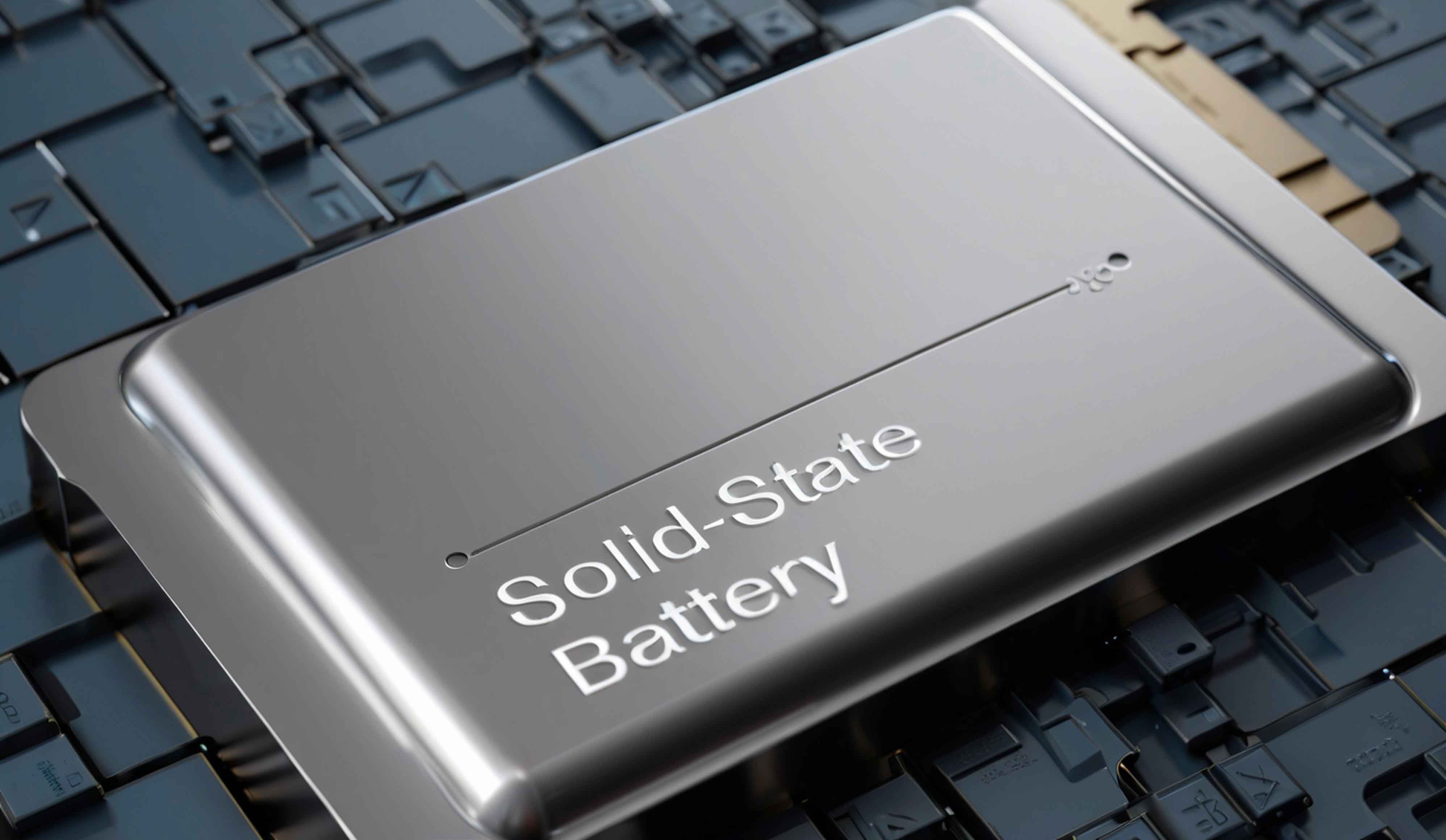The automotive industry stands at a pivotal juncture where advancements in energy storage systems will redefine the future of electric vehicles (EVs). As safety, reliability, and driving range dominate consumer priorities, the transition from liquid lithium-ion batteries to solid-state lithium batteries (SSLBs) emerges as a transformative leap. This paper synthesizes the technological trajectory of SSLBs, evaluates their competitive advantages, and forecasts their commercialization pathways while addressing critical challenges.

1. The Imperative for Solid-State Battery Adoption
Lithium-ion batteries with liquid electrolytes dominate today’s EV market, yet their limitations—flammability, energy density ceilings (~250 Wh/kg), and thermal runaway risks—constrain progress. SSLBs, by replacing liquid electrolytes with solid alternatives, promise:
- Enhanced Safety: Eliminating volatile organic solvents mitigates combustion risks.
- Higher Energy Density: Theoretical limits exceed 700 Wh/kg through lithium-metal anodes.
- Extended Lifespan: Reduced electrode degradation under high-voltage operation.
- Wider Temperature Tolerance: Stable performance from -30°C to 120°C.
Table 1 contrasts liquid, semi-solid, and solid-state batteries:
| Parameter | Liquid Li-ion | Semi-Solid | All-Solid-State |
|---|---|---|---|
| Liquid Content (wt%) | 25 | 5–10 | 0 |
| Electrolyte | Organic solvent + LiPF₆ | Composite (polymer/oxide + solvent) | Polymer/oxide/sulfide |
| Anode | Graphite | Si/graphite | Li-metal/Si |
| Energy Density (Wh/kg) | 230–250 | 300–350 | 400–700 |
| Cycle Life | 1,000–2,000 | 1,500–3,000 | 5,000+ |
2. Solid-State Electrolyte Architectures
SSLBs rely on four primary electrolyte systems, each with distinct trade-offs:
2.1 Polymer Electrolytes
Polyethylene oxide (PEO)-based electrolytes dominate early research due to process compatibility with existing Li-ion production lines. Despite flexibility and low-cost processing, limitations include:
- Low ionic conductivity: σLi+≈10−5S/cm at 25°C.
- Narrow electrochemical window (<4 V vs. Li/Li⁺).
- Poor dendrite suppression.
Recent advances employ crosslinked polymers or ceramic fillers (e.g., Li₇La₃Zr₂O₁₂) to enhance conductivity:σLi+=σ0exp(−kBTEa)
where Ea is activation energy, kB Boltzmann’s constant, and T temperature.
2.2 Sulfide Electrolytes
Sulfide systems (e.g., Li₁₀GeP₂S₁₂) achieve liquid-like conductivity (10−2S/cm) but face:
- Hydrolysis sensitivity: Li3PS4+H2O→2Li2S+H2S↑.
- Narrow stability window (~1.7–2.5 V).
- High manufacturing costs (argon-controlled environments).
2.3 Oxide Electrolytes
Garnet-type oxides (Li₇La₃Zr₂O₁₂, LLZO) and NASICON structures (Li₁.₅Al₀.₅Ge₁.₅(PO₄)₃) offer:
- High thermal stability (>1,000°C).
- Broad voltage compatibility (0–5 V).
- Moderate conductivity (10−4S/cm).
Doping strategies (e.g., Ta⁵⁺ substitution in LLZO) improve ionic transport:Li7−3xLa3Zr2−xTaxO12(x=0.2–0.4)
2.4 Halide Electrolytes
Emerging Li₃MX₆ (M = Y, In; X = Cl, Br) systems combine high conductivity (10−3S/cm) and oxidative stability (>4 V). Challenges include hygroscopicity and phase instability.
3. Technical Hurdles and Mitigation Strategies
Despite progress, SSLBs face three fundamental barriers:
3.1 Interfacial Resistance
Solid-solid electrode/electrolyte interfaces impede ion transfer. Solutions include:
- Nanoscale Coatings: LiNbO₃ or Al₂O₃ layers reduce charge transfer resistance.
- Composite Electrodes: Embedding electrolytes within cathodes (e.g., NCM811 + Li₆PS₅Cl).
3.2 Dendrite Propagation
Lithium dendrites pierce brittle electrolytes, causing short circuits. Mitigation approaches:
- Mechanical Reinforcement: Polymer-ceramic hybrids (e.g., PEO + LLZO) enhance fracture toughness.
- Current Redistribution: 3D Li-metal anodes homogenize Li⁺ flux.
3.3 Scalable Manufacturing
High-pressure sintering and atomic-layer deposition remain cost-prohibitive. Innovations like roll-to-roll printing and slurry casting aim to cut costs (Table 2).
| Company | Technology | Production Capacity (2025E) | Target Cost ($/kWh) |
|---|---|---|---|
| Toyota | Sulfide-based | 10 GWh | 90 |
| QuantumScape | Oxide-polymer hybrid | 5 GWh | 120 |
| CATL | Semi-solid (oxide) | 20 GWh | 80 |
| Solid Power | Sulfide thin-film | 2 GWh | 150 |
4. Commercialization Roadmap
The SSLB market will unfold in three phases:
4.1 Semi-Solid Transition (2024–2027)
Hybrid electrolytes (5–10 wt% liquid) bridge performance gaps:
- Energy density: 300–350 Wh/kg.
- Applications: Premium EVs (e.g., NIO ET7, Lucid Air).
4.2 All-Solid-State Pilots (2027–2030)
Sulfide and oxide systems target niche markets:
- Aerospace: 500 Wh/kg cells for UAVs.
- Luxury EVs: Mercedes EQXX (1,000 km range).
4.3 Mass Adoption (Post-2030)
Cost reductions below $100/kWh will enable mainstream EVs. Key drivers:
- Recycling infrastructure for Li-metal recovery.
- Government mandates (e.g., EU Battery Regulation 2027).
5. Economic and Strategic Implications
China’s dominance in liquid Li-ion batteries (75% global capacity) faces disruption as Japan/Korea lead sulfide SSLBs. OEM strategies diverge:
- Tesla: Vertical integration with dry electrode tech.
- BYD: Oxide-based SSLBs for <$80/kWh by 2028.
- VW: $300M investment in QuantumScape.
6. Conclusion
Solid-state lithium batteries represent not merely an incremental improvement but a paradigm shift in energy storage. While challenges in interfacial engineering and manufacturing persist, the confluence of material innovations and industrial scaling will unlock their full potential. For automakers, early partnerships with SSLB developers are critical to securing supply chains and avoiding technological obsolescence. As the adage goes, “He who controls the solid-state battery controls the future of mobility.”
